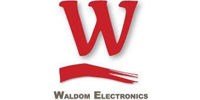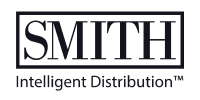Securing the Supply Chain: The U.S. Invests $1 Billion in Critical Minerals
Download this article in PDF format.
Eager to reduce its dependence on imports, the U.S. is putting nearly $1 billion toward shoring up its critical minerals supply chain. To get there, the U.S. Department of Energy (DOE) plans to fund projects that expand domestic mining, processing and recycling of the materials needed for batteries, semiconductors and clean energy systems. The goal is to cut reliance on foreign sources and build a more secure industrial base.
The funding covers multiple points in the supply chain, from refining and recovery to battery recycling and advanced processing. According to the DOE, $500 million is being allocated to battery materials and recycling, $135 to rare earth refining, $250 million to recovery at industrial sites and $50 million will support the advanced semiconductor processes.
Where Will the Money Go?
These new funding announcements were issued in accordance with the Executive Order Unleashing American Energy, and they focus on ensuring “a more secure, predictable, and affordable supply of critical minerals and materials that are foundational to American energy dominance, national security, and industrial competitiveness,” the DOE says.
“For too long, the United States has relied on foreign actors to supply and process the critical materials that are essential to modern life and our national security,” U.S. Secretary of Energy Chris Wright said in a statement. “Thanks to President Trump’s leadership, the Energy Department will play a leading role in reshoring the processing of critical materials and expanding our domestic supply of these indispensable resources.”
The proposed projects include:
Critical Minerals and Materials Accelerator. The Advanced Materials and Manufacturing Technologies Office expects to release a notice of funding opportunity (NOFO) of up to $50 million through the Critical Minerals and Materials (CMM) Accelerator program. The CMM Accelerator promotes technology maturation that can unlock capital investments and facilitate domestic commercialization. The proposed NOFO addresses several areas of interest to electronics manufacturers, including:
-
- Processes in the rare-earth magnet supply chain.
- Processes to refine and alloy gallium, gallium nitride, germanium and silicon carbide for use in semiconductors.
- Cost-competitive technologies for direct lithium extraction and separation.
- Critical-material separation technologies that allow for the co-production of useful products from byproducts and scrap.
Mines & Metals Capacity Expansion. The Office of Fossil Energy and Carbon Management is announcing its intent to issue a NOFO to support approximately $250 million of financial assistance for domestic industrial facilities that have the potential to produce valuable mineral byproducts from existing industrial processes. To de-risk the technical uncertainty and financial risk for commercial deployment, many technologies must be piloted at an industrial scale in an industrial facility where material feedstocks can be processed. The proposed NOFO addresses topic areas pertaining to both industry at large and the coal-based industry.
Rare Earth Elements Demonstration Facility. The Office of Manufacturing and Energy Supply Chains (MESC) is announcing its intent to issue a NOFO of up to $135 million to enhance domestic supply chains for rare earth elements (REEs). The goal is to reduce America’s dependence on foreign sources of REEs by demonstrating the commercial viability of methods for domestically refining and recovering REEs from mine tailings, deleterious material and waste streams.
Battery Materials Processing & Manufacturing. MESC also plans to issue a NOFO of up to $500 million to expand U.S. critical mineral and materials processing and derivative battery manufacturing and recycling. The proposed funding opportunity supports demonstration and/or commercial facilities processing, recycling or using (in the manufacturing process) critical materials that may include traditional battery minerals such as lithium, graphite, nickel, copper, aluminum and minerals that are contained within commercially available batteries (i.e., rare earth elements).
Recover Critical Minerals from Industrial Wastewater. The Advanced Research Projects Agency-Energy (ARPA-E) is expected to announce project selections for its $40 million program to develop technologies to recover critical minerals from industrial wastewater. ARPA-E’s Realize Energy-rich Compound Opportunities Valorizing Extraction from Refuse waters (RECOVER) program aims to enable the U.S. to reduce its dependence on critical mineral imports and replace them with secure, domestic sources.
The message in all this is clear: The U.S. government sees critical minerals as much more than just “raw materials.” By investing in mining, refining, recovery and recycling, the DOE is making the case that controlling these inputs is essential to building resilient supply chains.
About the Author
Avery Larkin
Contributing Editor
Avery Larkin is a freelance writer that covers trends in logistics, transportation and supply chain strategy. With a keen eye on emerging technologies and operational efficiencies, Larkin delivers practical insights for supply chain professionals navigating today’s evolving landscape.






